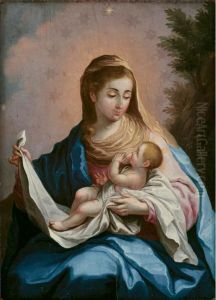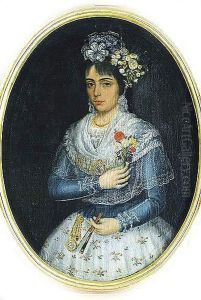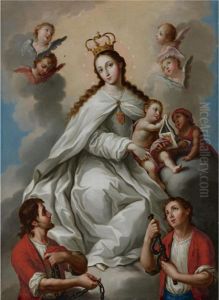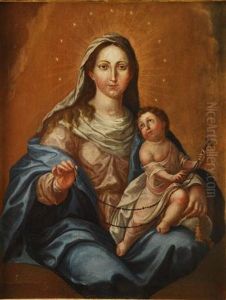Jose De Campeche Paintings
José Campeche y Jordán, born in San Juan, Puerto Rico, on December 23, 1751, is recognized as the first known and celebrated Puerto Rican visual artist and one of the most distinguished painters in the history of colonial Latin America. His father, Tomás Campeche, was a freed slave, and his mother, María Jordán, was from a well-to-do Spanish family. Despite the racial prejudices of the time, José's family was respected in the community, and he received a decent education, which included training in art, likely from local painters and possibly from his father, who was also a talented amateur artist.
Campeche's work was profoundly influenced by the European Baroque style, yet it featured local themes and iconography, which made it particularly unique and valuable for understanding the culture of Puerto Rico during his lifetime. His paintings included religious subjects, portraits of prominent figures, and allegorical themes. He was inspired by and sometimes copied works of great European artists such as Bartolomé Esteban Murillo, whose influence can be seen in Campeche's use of light and shadow, as well as in the tender emotional expressions of his figures.
Despite the limitations of the colonial society in which he lived, Campeche became a prolific artist. His works were in high demand among the church and colonial officials, who appreciated his attention to detail and his ability to convey the social status and wealth of his subjects in his portraits. Today, his paintings are considered national treasures and are a source of pride for Puerto Rico. They are preserved in various museums and collections, including the Museo de Arte de Ponce and the Metropolitan Museum of Art in New York.
José Campeche y Jordán's contributions to art extend beyond the canvases he painted; he helped to define a unique Puerto Rican aesthetic at a time when the island's cultural identity was still emerging. His legacy is celebrated for its artistic merit and its historical importance. Campeche died on November 7, 1809, in San Juan, leaving behind a body of work that continues to be studied and admired for its beauty and historical significance.





